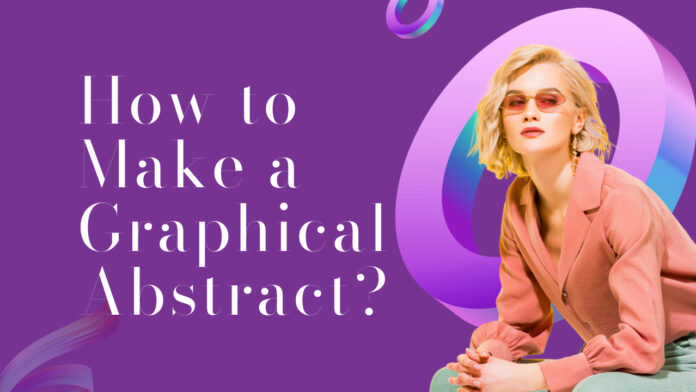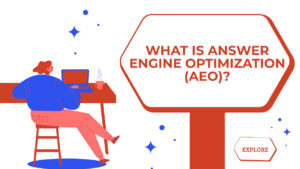What is a graphical abstract?
A graphical abstract serves as a concise visual representation of the core findings or insights from a research study, functioning similarly to a movie poster for a film. It is typically crafted as a single image or diagram that encapsulates the essence of the research, allowing viewers to quickly grasp the information without delving into the full text.
This visual summary is particularly valuable in academic and scientific communities where complex ideas are common. It simplifies the communication of key concepts and results, thereby enhancing accessibility.
The design of a graphical abstract often includes elements like illustrations, icons, and minimal text to communicate the study’s main points effectively..
What is the purpose of a graphical abstract?
➡️ Visual Summary: It provides a visual representation of the main findings or messages of a research paper.
➡️ Quick Understanding: Helps readers quickly grasp the essence of the research without reading the entire paper.
➡️ Enhanced Communication: Makes complex ideas easier to understand using images, diagrams, or graphics.
➡️ Engagement: Attracts a wider audience by making the research visually appealing and easier to share on social media.
➡️ Focus on Key Points: Highlights the most important results or conclusions, guiding the reader’s focus.
How to make a graphical abstract?
Focus on Key Messages
When creating a graphical abstract, it is crucial to prioritize the key messages that you want your audience to grasp immediately. Think of the central idea or the most significant findings of your research. Distill these points into short, clear statements or visuals that succinctly summarize your study’s contributions.
By clearly conveying these essential messages, you not only enhance comprehension but also create an engaging entry point for readers, prompting them to dive deeper into your research.
Focus on Visual Elements
The visual aspects of a graphical abstract are vital, as they serve to attract attention and facilitate understanding. Use graphics such as icons, charts, and diagrams that are relevant to your research and represent the core ideas effectively.
Incorporate color schemes and shapes that are not only visually appealing but also assist in communicating your findings. The right combination of visual elements can make complex concepts more accessible, encouraging faster and clearer communication of information.
Keep it Simple!
Simplicity is key when designing a graphical abstract. Aim for a layout that is not cluttered, and avoid overwhelming the reader with too much information. Focus on one or two primary visuals supported by minimal text; this makes your abstract easy to digest and understand at a glance.
Remember, the goal is to provide a snapshot of your research, so stripping away unnecessary complexity can significantly enhance clarity and impact.
Maintain Consistency
Consistency in design is essential for creating a professional-looking graphical abstract. Ensure that fonts, colors, and styles are uniform throughout the graphic to create a cohesive visual narrative.
This not only contributes to the aesthetic appeal but also reinforces the message, making it easier for readers to follow your key points. Consistency helps in building credibility; a well-designed abstract reflects the quality of your research.
Stick to Journal Guidelines
Different journals have specific guidelines regarding the format and content of graphical abstracts. Familiarize yourself with these requirements, as they may dictate aspects such as size, resolution, and acceptable file types.
Adhering to these guidelines ensures that your abstract meets publication standards and reduces the likelihood of your submission being delayed or returned for modification.
By complying with journal specifications, you demonstrate professionalism and respect for the publication process.
Consistent Style
Maintain a cohesive look throughout the graphical abstract by using similar styles, colors, and fonts. This enhances readability and professionalism.
Text Conciseness
Limit the text to a few keywords or short phrases that encapsulate your findings. Avoid overcrowding the image with too much information.
Layout Consideration
Organize the visual elements in a logical flow that guides the viewer’s understanding of your research. Arrows or lines can be useful to indicate relationships or processes.
Color Usage
Use a complementary color scheme that draws attention but does not distract. Ensure that color-blind individuals can still interpret the information effectively.
Example of a graphical abstract
A graphical abstract is like the movie trailer of a scientific paper, it provides a quick peek into the main findings, enticing readers to explore further. Imagine a vibrant, single-image snapshot that highlights your research’s essential messages with clarity and creativity.
For example, if your study involves the impact of a new drug on heart health, your graphical abstract might feature a sleek heart icon, colorful charts showing statistical improvements, and arrows indicating the process, all elegantly arranged to draw the eye.
The goal is to make complex information easily digestible, so anyone glancing at it can quickly grasp the significance of your work without diving deep into the text!
It’s visually engaging and a powerful way to convey your research story in a nutshell.
Final thoughts
A graphical abstract is like a visual snapshot of your research, condensing the main findings into a single image or diagram. It serves to quickly communicate the core message of your study to readers, making it easier for them to understand the essence of your work at a glance.
By utilizing clear visuals and concise text, a well-crafted graphical abstract can attract more readers and enhance the visibility of your research, similar to how a movie poster captures the main theme of a film.
Source link











